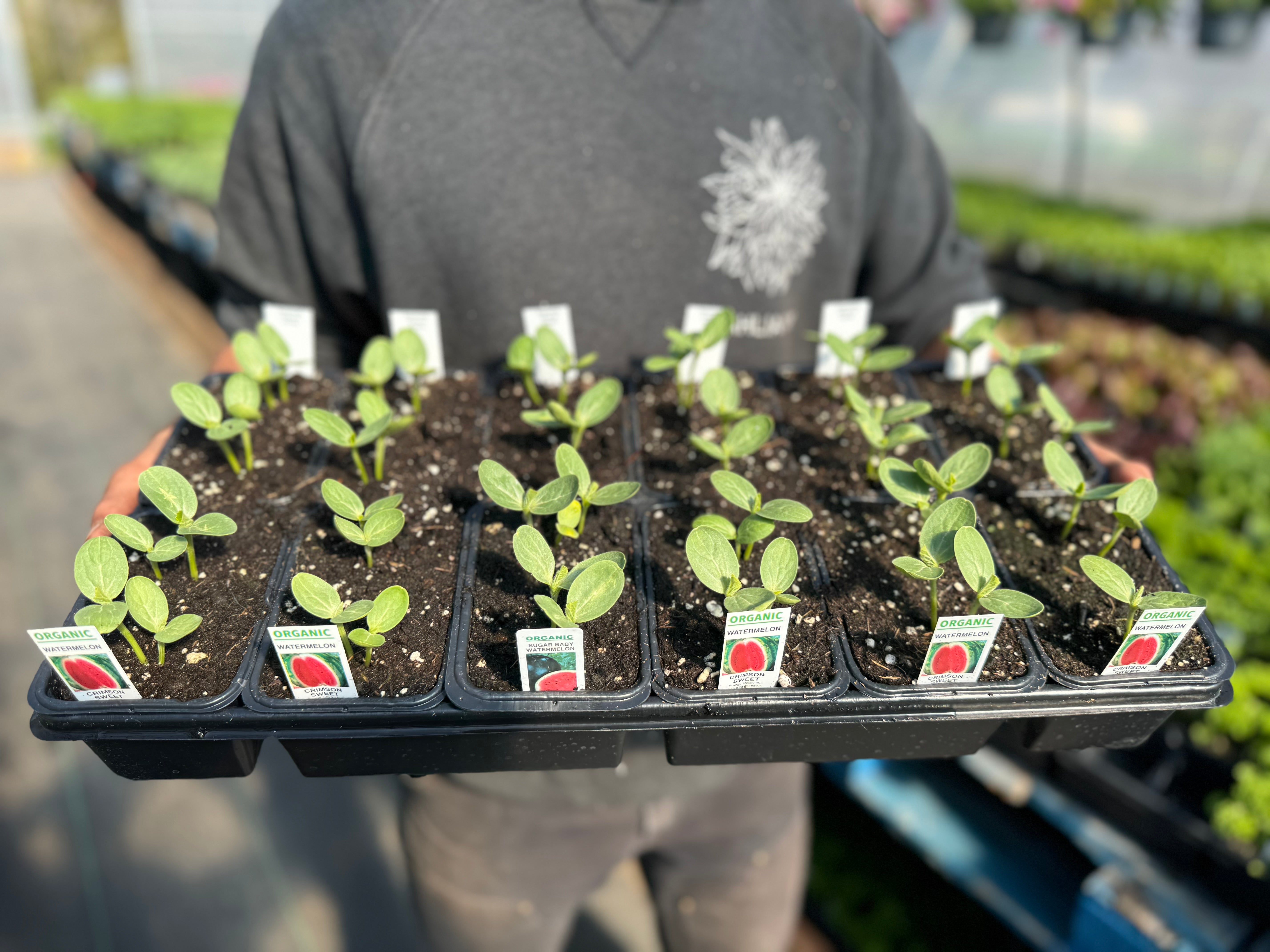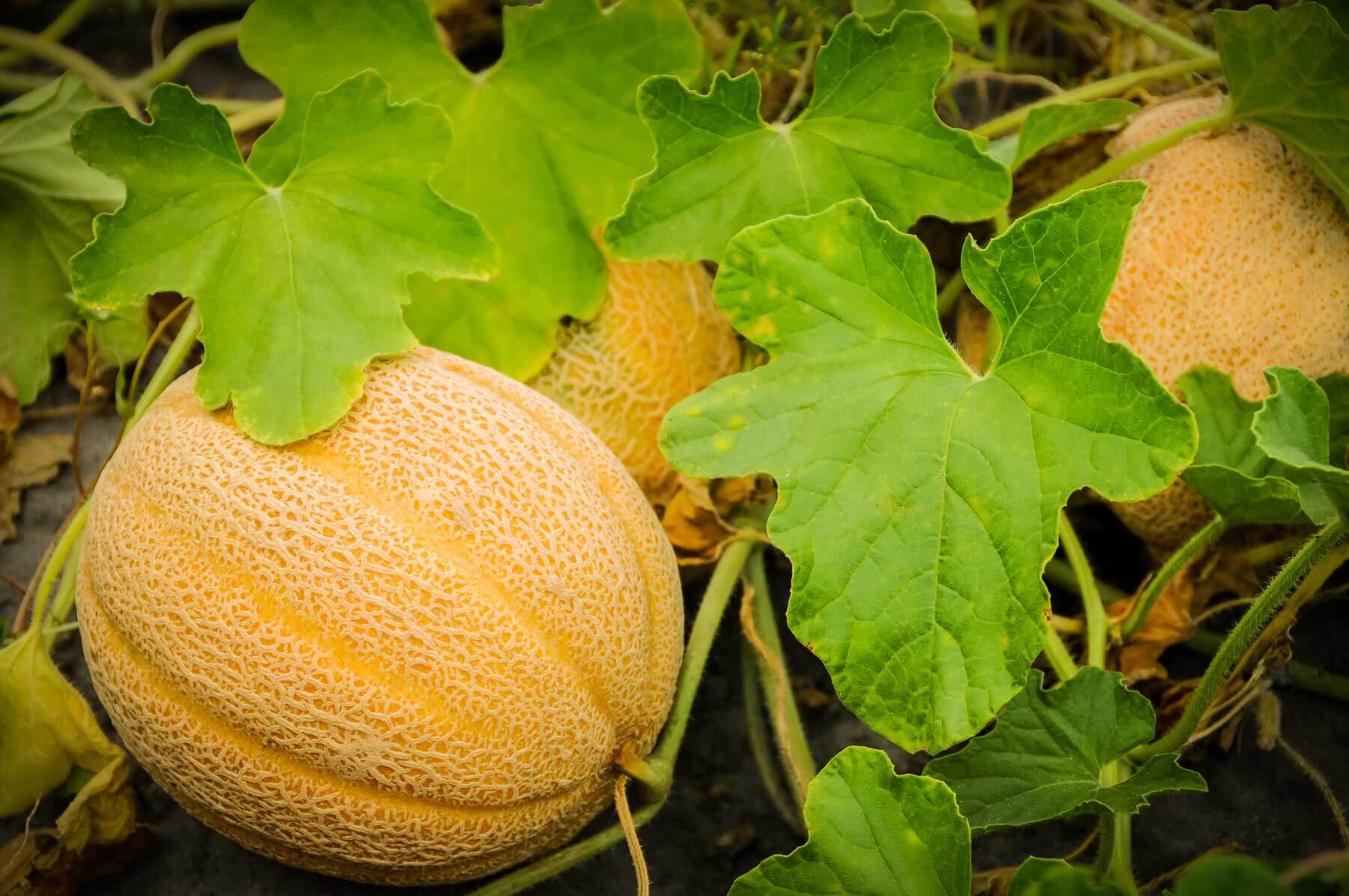


Melon Seedlings
Growing melons can be a rewarding gardening experience. Melons are warm-season crops that require a long, hot growing season. They thrive in temperatures between 70°F (21°C) and 90°F (32°C). Melons are typically grown in the spring and summer months.
Tips on how to grow Melons:
1. There are many different types of melons, including watermelons, cantaloupes, honeydews, and muskmelons. Choose a variety that suits your taste preferences and growing conditions.
2. Provide the right growing conditions: Melons thrive in warm and sunny locations. Choose a spot in your garden that receives full sun for at least 6-8 hours a day. Melons also require well-drained soil that is rich in organic matter. Prepare the soil by adding compost or well-rotted manure before planting.
3. Planting: Plant melon transplants after the danger of frost has passed and the soil has warmed up. Space the plants according to the variety's recommended spacing, typically 2-3 feet apart. If planting in rows, space the rows 4-6 feet apart.
4. Watering: Melons require consistent moisture to grow well. Water the plants deeply, providing about 1-2 inches of water per week. Avoid overhead watering, as it can increase the risk of disease. Consider using drip irrigation or soaker hoses to deliver water directly to the roots.
5. Mulching: Apply a layer of organic mulch, such as straw or wood chips, around the melon plants. Mulch helps retain moisture, suppress weeds, and regulate soil temperature.
6. Support and trellising: Some melon varieties, such as certain types of cantaloupes, can benefit from trellising or support. This can help save space and improve air circulation, reducing the risk of disease. Use trellises, cages, or stakes to support the vines as they grow.
7. Pollination: Melons require pollination to set fruit. Bees and other pollinators are attracted to the flowers, so it's important to provide a pollinator-friendly environment. Avoid using pesticides that can harm pollinators.
8. Pest and disease control: Keep an eye out for common pests such as aphids, cucumber beetles, and squash bugs. Use organic pest control methods or insecticidal soap if necessary. Proper spacing, good air circulation, and mulching can help prevent diseases such as powdery mildew.
9. Harvesting: Melons are ready to harvest when they have reached their full size and have a sweet aroma. The stem should easily detach from the fruit when gently twisted. Different melon varieties have different signs of ripeness, so refer to the specific variety's guidelines for harvesting.
Our Varieties:
Watermelon
Watermelon plants are warm-season annual plants that produce large, juicy fruits. Watermelon plants have a sprawling growth habit, with long, trailing vines that can spread several feet in all directions. The vines can be trained to grow on trellises or allowed to spread on the ground. The leaves of watermelon plants are large, lobed, and have a rough texture. They are typically dark green in colour and can provide some shade to the developing fruits. Watermelon plants produce both male and female flowers on the same plant. The male flowers appear first and are responsible for pollination. The female flowers, which have a small fruit attached at the base, develop later. The fruits of watermelon plants are large and round or oblong in shape. They have a thick rind that can be smooth or striped, depending on the variety. The flesh of the fruit is juicy and sweet, ranging in colour from red to pink or yellow.
Cantaloupe
Cantaloupe plants are warm-season annual plants that produce sweet and juicy fruits. Cantaloupe plants have a sprawling growth habit, with long, trailing vines that can spread several feet in all directions. The vines can be trained to grow on trellises or allowed to spread on the ground. The leaves of cantaloupe plants are large, lobed, and have a rough texture. They are typically light green in colour and can provide some shade to the developing fruits. Cantaloupe plants produce both male and female flowers on the same plant. The male flowers appear first and are responsible for pollination. The female flowers, which have a small fruit attached at the base, develop later. The fruits of cantaloupe plants are round or oval in shape, with a rough, netted rind. The flesh of the fruit is juicy and sweet, ranging in color from orange to salmon. Cantaloupes have a distinct aroma when ripe.


